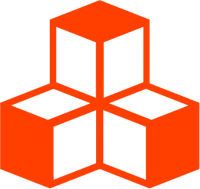Advanced
Custom Abstractions
A lot of the components you will find in the package
@threlte/extras are abstractions on
top of the <T> component. These abstractions provide
extra functionality like automatically invalidating the frame or providing
default values or extra props.
A common use case for custom abstractions is to create a component that is a
fixed entity in your Threlte app which you want to reuse in multiple places or
which exposes a specific behavior. As an example, let’s create a component that
is made up from multiple <T> components resembling a tile of some kind:
<script>
import { T } from '@threlte/threlte'
import { MathUtils } from 'three'
let { children } = $props()
</script>
<T.Group>
<!-- 2x2 Tile -->
<T.Mesh rotation.x={-90 * MathUtils.DEG2RAD}>
<T.PlaneGeometry args={[2, 2]} />
<T.MeshStandardMaterial />
</T.Mesh>
{@render children()}
</T.Group>Let’s see what implementing that component looks like:
<script>
import Tile from './Tile.svelte'
</script>
<Tile />Props
The <Tile> component is now available in the scene and can be reused as many
times as you want.
Now we’d like to assign a different position to every <Tile> in order to
position it in the scene. We can do that by passing a position prop to the
<Tile> component:
<script>
import Tile from './Tile.svelte'
</script>
<Tile position={[0, 0, 0]} />
<Tile position={[2, 0, 0]} />
<Tile position={[4, 0, 0]} />That doesn’t work yet. The component <Tile> internally needs to make use of
the position prop to set the position of its children. We can do that by
spreading props on the <T.Group>
component at the root hierarchy of <Tile>:
<script>
import { T } from '@threlte/threlte'
import { MathUtils } from 'three'
let { children, ...props } = $props()
</script>
<T.Group {...props}>
<!-- 2x2 Floor -->
<T.Mesh rotation.x={-90 * MathUtils.DEG2RAD}>
<T.PlaneGeometry args={[2, 2]} />
<T.MeshStandardMaterial />
</T.Mesh>
{@render children()}
</T.Group>Types
The last thing we need to do is to add types to our custom abstraction so that
IDEs like VS Code can provide autocompletion and type checking. We will create a
types.ts file next to the Tile.svelte file and add the following content:
import type { Props } from '@threlte/core'
import type { Group } from 'three'
export type TileProps = Props<Group>As of now it’s necessary to declare the props in a separate file.
If you declare them inside the <script> block, the Svelte compiler
flattens the resulting type, removing JSDoc comments and possibly
breaking it.
The generic type Props<Type> is a utility type that extracts all possible
props that a <T> component accepts – in this case <T.Group>. It also creates
a bindable ref prop that can be used to bind to the group created by the
<T.Group> component.
We need to import the TileProps type in our Tile.svelte file and make use of
the ref prop. For that we:
- Add the
lang="ts"attribute to the<script>block - Import the
TilePropstype - Add the bindable prop
refto the props - Bind
refto the bindable proprefof the root<T.Group>component - Pass
refto thechildren()block
<script lang="ts">
import { T } from '@threlte/threlte'
import { MathUtils } from 'three'
import type { TileProps } from './types'
let { children, ref = $bindable(), ...props }: TileProps = $props()
</script>
<T.Group
{...props}
bind:ref
>
<!-- 2x2 Floor -->
<T.Mesh rotation.x={-90 * MathUtils.DEG2RAD}>
<T.PlaneGeometry args={[2, 2]} />
<T.MeshStandardMaterial />
</T.Mesh>
{@render children({ ref })}
</T.Group>Now we can use the <Tile> component in our scene and get autocompletion and
type checking.
<script>
import Tile from './Tile.svelte'
import { TransformControls } from '@threlte/extras'
</script>
<Tile position={[2, 0, 2]}>
{#snippet children({ ref })}
<TransformControls object={ref} />
{/snippet}
</Tile>